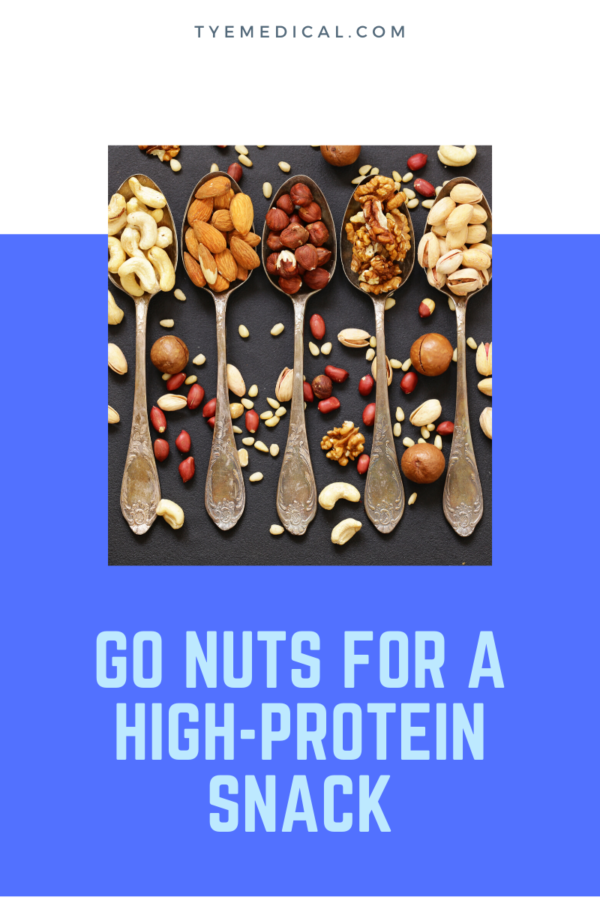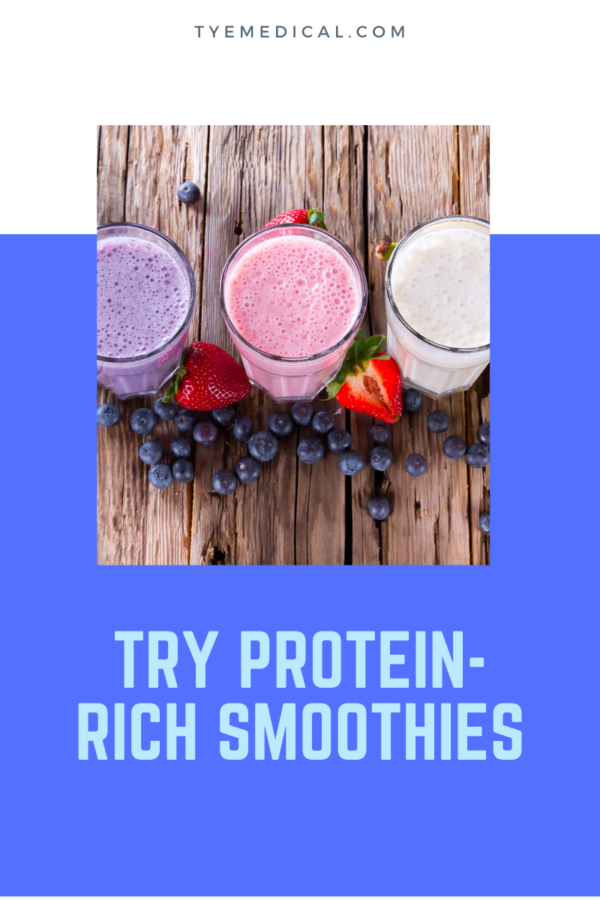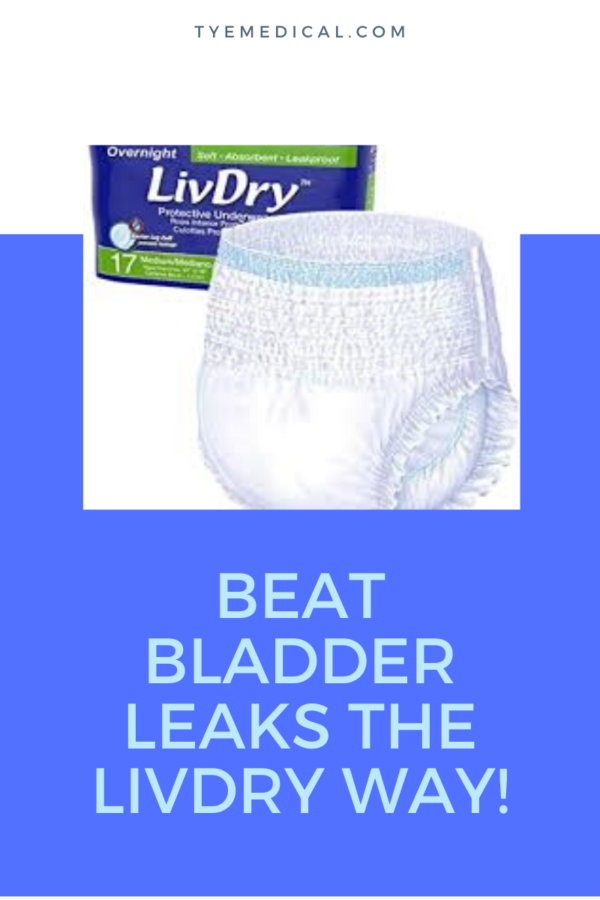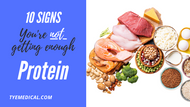How Much Protein Do I Need? 10 Signs You’re Not Getting Enough
Jul 9th 2020
If you’re not a body builder, you probably don’t think about your protein intake very often. Afterall, we hear how many Americans eat too much protein anyway – and it’s probably true in many cases. However, it’s worth asking the question: how much protein do I need? Many older adults, dieters, and vegans are at risk for eating too little protein. Calorie restrictions and decreased appetites often result in protein shunning.
So, what’s the big deal?
Protein plays a vital role in many bodily functions, which means you need to verify you’re getting the right amount to maintain good health. Some of your mysterious symptoms could be solved by boosting the protein in your diet.
Check out these 10 signs that you need to increase your protein intake and then learn how much protein is right for you.
1. You constantly crave sugar and simple carbs.
The cold reality is a lack of protein ignites unhealthy cravings. Many times, your body doesn’t crave what it needs – it craves what it wants. So when you’re lacking protein, your body screams for sugar, fat, and carbs as a quick fix. Think about it: when you eat between meals do you want to grab a candy bar, a snack bag of chips, or a piece of leftover chicken breast? Most of us aren’t going for the chicken. The lack of protein in our last meal triggered cravings for sugary, fatty, or carb-laden foods. Yikes!
If you want to stop cravings and feel fuller longer, add more lean protein to your diet.
2. Your belly fat won’t budge even though you are committed to working out.
It seems like you’re doing all the right things – exercising daily and eating a healthy diet. So you probably wonder why you can’t vanquish that belly fat. A low-protein diet could be the culprit!
When asking the question: “How much protein do I need,” remember two things:
- You can’t build muscle without protein
- Muscle burns fat
So if your diet is low in protein, your muscles aren’t burning the necessary calories to eliminate that stubborn belly fat. Try to eat more than the required amount for your age, weight, and activity level. (Just don’t go overboard. We’ll give you some guidelines later in the article.)
And be sure to fuel up on healthy protein before or after exercise, even if it’s just a snack with 12 or 15 grams. Just remember to choose protein powders and protein bars that are low in sugar. Many brands now use stevia to sweeten their products.
 3. You just ate an hour ago, but you’re hungry again.
3. You just ate an hour ago, but you’re hungry again.
Nothing satisfies hunger like protein! That’s just science. Proteins take longer for the digestive system to process and therefore keep us feeling fuller longer. Carbs, fats, vegetables, and fruit move quickly through the digestive tract, and even though they’re necessary for good health, they don’t keep us satisfied for long. If you don’t include enough protein in your diet – you’ll get hungry again in no time. This is when you need to ask yourself, “How much protein do I need, and did I get enough in my last meal?”
This is especially true if your low-protein meal includes more sugar and simple carbs. This causes your blood sugars to spike and crash, which triggers those food cravings. The solution is to eat balanced meals with adequate protein, a modest portion of healthy carbohydrates, a small amount of fat, and plenty of veggies and fruits.
4. Your skin is a desert – dry and flaky.
Has your once supple skin turned dry and flaky? Sure, there are many causes for this (like thyroid conditions), but if you’re also experiencing other symptoms on this list, you might want to consider your protein consumption. Surprisingly, protein is essential for healthy skin and nails. We often think that a lack of calcium is the culprit, but for senior adults, dieters, and carb lovers, it could be a lack of protein.
5. Your hair is thinning too.
Sure, there are lots of reasons for thinning hair, but if you’re on a low-calorie diet that isn’t packing enough protein, it could be the cause. Complete protein contains all nine essential amino acids that help to keep your skin, nails, and hair healthy. Without enough quality protein in your diet, your supply of amino acids is cut off. The solution is to eat (or drink) more protein! If you’re not much of a meat eater, you can still get complete protein from tofu, tempeh, edamame, and vegan protein powders. Check the packages for servings sizes and protein content.
6. You battle constant fatigue and brain fog.
If you’re tired and not mentally on top of your game – it could be a low-protein, high-carb diet. Carbohydrates tend to make you sleepy, largely due to the dramatic fluctuations they cause in blood sugar. On the other hand, protein helps you stay alert and active thanks to the amino acid tyrosine that triggers the brain to produce the chemical messengers norepinephrine and dopamine. These neurotransmitters keep you energized. But you don’t need to load up on protein. You can enjoy the benefits when you eat the recommended amount.
7. You’re feeling moodier than usual.
Dopamine isn’t the only mood-boosting neurotransmitter protein stimulates. It also helps you maintain higher levels of serotonin. Together, serotonin and dopamine ward off depression, anxiety, and mood swings. If you’re feeling the blues, it might be worthwhile to ask, “How much protein do I need?” (Just keep reading, we’re almost to the answer!)
The next time you’re feeling down, put this information to the test. Instead of reaching for a bag of potato chips (we’ve all been guilty of that!), choose a healthy, higher protein snack like a protein bar or shake. If you want to avoid those moody slumps altogether, be sure to eat regular, balanced meals with adequate protein, and don’t let yourself get too hungry.
Apparently, “hangry” is a real thing! (In case I lost you there, here’s an explanation: people have been using the word “hangry” to describe being so hungry that you start feeling grumpy or angry.)
8. Your clothes are still tight even though you lost weight.
So, the scale says you’re lighter but you’re still having a tough time zipping that skirt. What’s the deal? The sad reality is that if you’re not getting enough protein in your diet, you might be losing muscle instead of fat. This is especially possible if you’re middle age and above, because you’re already battling muscle loss due to hormone changes. So, a low protein diet can have an extremely negative impact on your muscles. In this case, be sure to eat even more protein than the minimum recommended. This could help reverse some muscle loss.
9. You always feel bloated.
If you aren’t getting the protein you need in your diet, it throws off the fluid balance in your body – the balance of fluid inside and outside your cells. This buildup of fluid inside tissues leads to swelling in your belly, legs, and ankles – making you feel bloated. Belly bloat is seriously uncomfortable and destroys your appetite, which means you’re still not getting the protein you need. If you think a low protein diet is causing your bloat, start solving the problem by eating a protein bar or drinking a protein shake. Then, be more mindful of the protein you’re getting at each meal and even in your snacks.
 10. You keep getting sick.
10. You keep getting sick.
You’ve probably heard of antibodies and how they’re the backbone of the immune system. But did you realize that protein powers these sickness-fighting warriors? When you neglect protein in your diet, you’re limiting your body’s ability to fend off illness. If you keep catching colds or other viruses, a lack of protein might be to blame. Try starting your day with a protein-rich fruit smoothie that includes Greek yogurt or protein powder, as well as some fresh or frozen fruit.
So, How Much Protein Do I Need – Really?
Your age and level of physical activity play a huge role in how much daily protein you need. As we age, it becomes more difficult to maintain or gain muscle mass. But don’t worry – you can still get in shape and stay healthy with the right protein intake and exercise program.
Here are the minimum daily protein requirement numbers:
Adult 18-64 – .8 grams per kilogram of body weight
Adults 65 and older – 1 gram of protein per kilogram of body weight
Like most of us Americans, you probably have no idea what your body weight is in kilograms. Here is a handy calculator for converting pounds to kilograms. Take your weight in kilograms and multiply it by either .8 or 1, depending on your age. That will give you the minimum amount of protein you should eat in a day.
If you’re exercising, you might want to try using this protein calculator, because it takes your activity level into consideration as well. More active people need a little extra protein in their diet.
If you’re a woman trying to lose weight, you’ll need at least 60 grams of protein per day, according to dieticians – and more is better.
Just because you’re under age 65 doesn’t mean you don’t need additional protein. Our ability to maintain and build muscle starts the downward slope at age 50. So, for those who are active, trying to lose weight, or hoping to prevent diabetes, you’ll still will want to aim for a goal above the minimum.
Plant-Based Protein
Are there vegans or vegetarians among us? If so, you should be wondering, “How much protein do I need,” because it’s far too easy to miss out when avoiding meat and dairy. However, it’s very possible for vegans to eat 60 grams or more of plant protein each day without too much trouble (even if you’re on a low-calorie vegan diet). Aim for 20 grams per meal. You can do this by drinking a smoothie for breakfast made with plant-based protein powder and then adding a cup of shelled edamame (soybeans), tofu, or a half cup of tempeh to your lunch and dinner. It’s also a great idea for meat eaters who want to supplement their diet with some non-meat sources of protein for health reasons.
 Even healthy eaters get bladder leaks. Check out our super absorbent gel core!
Even healthy eaters get bladder leaks. Check out our super absorbent gel core!
Even if you’re using an incontinence product that seems to be working okay, consider trying our LivDry Protective Underwear that features our super absorbent gel core. With three different absorptions levels and the option to use shaped pad inserts, you’ll feel secure (and comfortable).
Our two-piece system lets you throw out a used pad and then insert a new one into the same Protective Underwear. Changing your incontinence underwear less frequently is convenient for you (or for caregivers) and saves money!
Check out our Protective Underwear product page and shop now!
Discreet shipping always – and free shipping on orders over $20!

